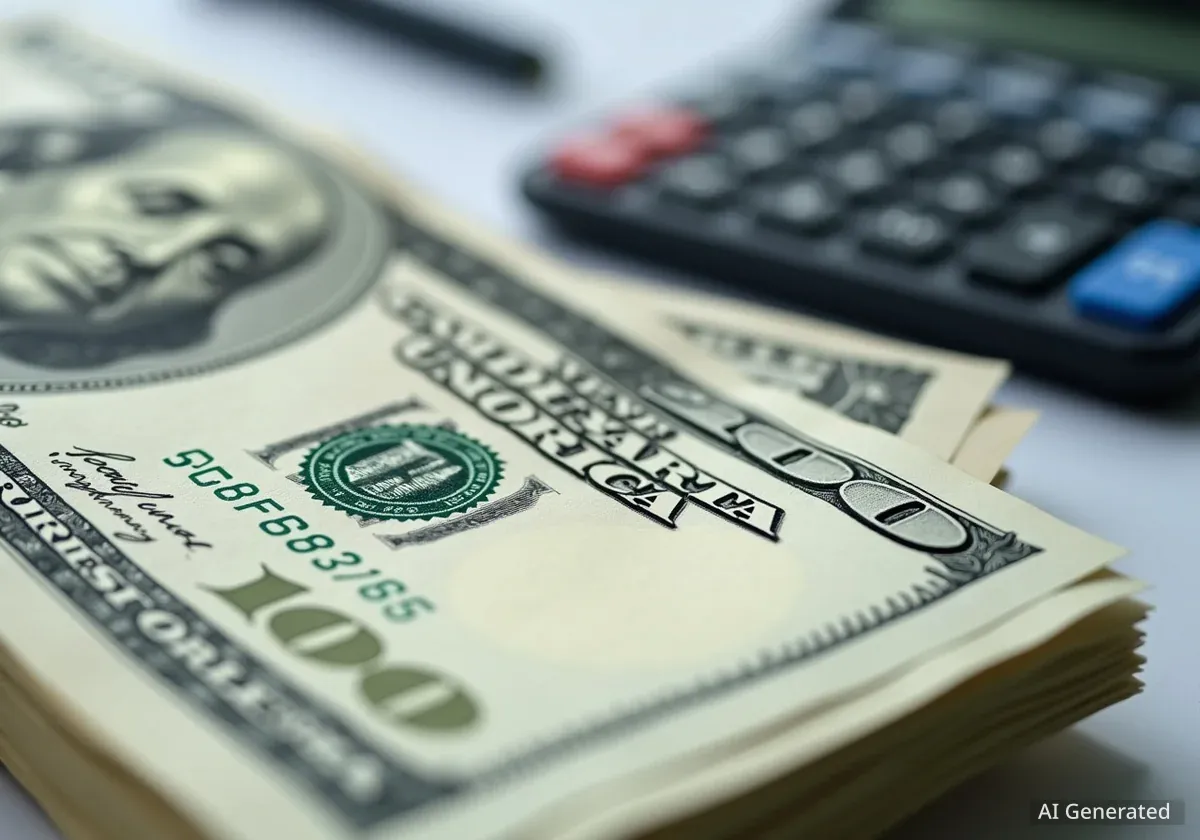Consumer prices in Tokyo accelerated unexpectedly in October, with key inflation metrics climbing to 2.8% and significantly exceeding the Bank of Japan's 2% target. The surprising data has intensified discussions about a potential interest rate hike, though central bank officials continue to signal a cautious, wait-and-see approach.
Key Takeaways
- Tokyo's core inflation, a key metric for the Bank of Japan (BOJ), rose to 2.8%, beating forecasts of 2.6%.
- Despite rising prices, BOJ Governor Kazuo Ueda has indicated the bank will wait for data from spring 2026 wage negotiations before considering policy changes.
- The Japanese yen strengthened slightly against the U.S. dollar following the inflation report, but the broader trend of a weaker yen remains in place.
- Market expectations for a near-term rate hike have cooled, with traders now looking toward April 2026 for a potential move.
Inflation in Tokyo Exceeds Forecasts
Fresh data released Friday shows that consumer prices in Japan's capital are rising faster than anticipated, a signal that inflationary pressures may be more persistent than previously thought. The headline inflation rate for October jumped to an annual pace of 2.8%, an increase from 2.5% in September.
More importantly for policymakers, the core inflation measure, which excludes volatile fresh food prices, also rose to 2.8%. This figure is closely watched by the Bank of Japan and came in above market expectations of 2.6%.
Tokyo Inflation at a Glance
- Headline Inflation: 2.8%
- Core Inflation (ex-food): 2.8%
- Core-Core Inflation (ex-food & energy): 2.8%
- Bank of Japan Target: 2.0%
A third metric, known as "core-core" inflation, which strips out both fresh food and energy costs, also climbed to 2.8%. With all three key indicators sitting well above the central bank's 2% target, pressure is mounting on the BOJ to consider tightening its monetary policy.
Because price trends in Tokyo often serve as a leading indicator for the rest of the country, economists will be watching closely when national inflation data is released later in November.
Bank of Japan Signals a Cautious Approach
Despite the hotter-than-expected inflation figures, the Bank of Japan appears to be in no hurry to raise interest rates. Following a recent policy meeting where the bank held its key rate at 0.5%, Governor Kazuo Ueda emphasized the need for patience.
Ueda stated that the bank wants to see clear signs of sustainable wage growth before making any policy adjustments. He specifically pointed to the annual spring wage negotiations, known as "shunto," as a critical data point.
"We want to see ‘early momentum’ in spring wage negotiations when considering whether to tighten policy further," Ueda suggested, signaling a desire to wait well into the first quarter of 2026 before an adjustment may be made.
This focus on wages is central to the BOJ's strategy. The bank believes that for inflation to be sustainable, it must be supported by rising incomes, which in turn fuel consumer spending. Without significant wage growth, any inflation is seen as temporary and driven by external factors like import costs.
Why Wage Negotiations Matter
The annual "shunto" wage talks between major corporations and unions are a cornerstone of the Japanese economy. The outcomes of these negotiations set the tone for wage trends across the country for the entire year. The Bank of Japan is looking for a strong outcome in 2026 to confirm that a positive wage-price spiral is taking hold, which would justify a move away from its ultra-loose monetary policy.
Market Sentiment Shifts on Rate Hike Timeline
The combination of rising inflation and a patient central bank has created a complex situation for financial markets. Before the latest BOJ meeting, some investors were betting on a rate hike as early as December.
However, Governor Ueda's cautious comments have pushed those expectations back. Swaps markets, which traders use to bet on future interest rate moves, now indicate that a full 25 basis point rate hike is not expected until at least April 2026, after the conclusion of the pivotal wage talks.
This shifting outlook has direct consequences for the Japanese yen. Interest rate differentials are a major driver of currency values. With rates in the United States remaining relatively high and the BOJ holding steady, the U.S. dollar has maintained its strength against the yen.
USD/JPY Reacts but Long-Term Trend Holds
In the immediate aftermath of the Tokyo inflation report, the Japanese yen saw a modest strengthening. The USD/JPY currency pair, which represents how many yen one U.S. dollar can buy, pulled back from a multi-month high above the 154.00 level.
However, market analysts note that the broader trend remains firmly in place. The significant gap between U.S. and Japanese interest rates continues to favor the dollar. As a result, many traders view any yen strength as a temporary pullback within a larger upward trend for USD/JPY.
From a technical perspective, the 153.28 level is now seen as a key area of support. This level previously acted as resistance, and a successful hold above it could provide a platform for another move higher. Should this level fail, the next significant support is seen around the 152.00 mark.
While the latest inflation data adds a new layer of complexity, the core dynamic remains unchanged. The Bank of Japan is committed to its cautious stance until it sees convincing evidence of sustained wage growth, leaving the yen vulnerable to further weakness against the dollar in the medium term.





